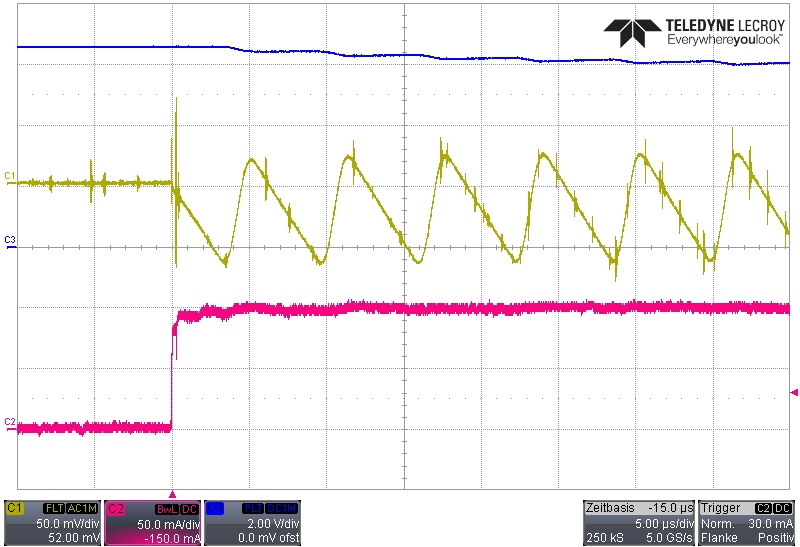Other Parts Discussed in Thread: SN6505A, SN6505B
Hi,
I have modified a SN6505A EVM the following way:
- replaced SN6505A with SN6505B
- replaced WE 750315240 with a WE 760390015
Input voltage is now 3.3V instead of 5V.
Now I have the parts that are rcommended in the SN6505 datasheet (Table 3) for a 3.3V to 5V converter.
So far everything works fine with the isolated converter.
If I'm doing a load step from 0 to 100mA (47Ohm resistor) at the output of the LDO (TPS76701) I get an istable output. The ripple voltage at the output is as follows:
- frequency: around 165kHz
- amplitude (Vpp): around 93mV
With the capacitors populated on the SN6505A EVM I think all the requested requirements of the TPS76701 are met.
Do I need more capacitance at the LDO output to get a stable output?
If yes, what would be a reasonable value?
Or could it be a problem of the combination of the push-pull converter and the LDO?
Thanks and best regards,
Patrick



